One of the challenges with any animal is keeping them healthy. Just as with humans, reindeer can be affected by a number of diseases and ailments. Whilst they are tough, hardy creatures, one of the largest threats is diseases spread by ticks. With climate change leading to milder, wetter winters, the ticks are not always knocked back so hard each year, so there is an increase in numbers. We mostly see tick-borne illness affecting our reindeer in the Spring and Autumn, with May/June and September being the worst months.
So how can you tell that a reindeer is under the weather? When our herd are spending time either in the hill enclosure or at our hill farm, our most important tool is food! A happy, content reindeer will be eager for their breakfast, and visitors on the Hill Trips may have seen that we routinely put out a long line of food, big enough for each reindeer to find a pile, and then count the herd (who are now conveniently stood in a line). Of course they don’t reliably stand still… counting accurately definitely takes a bit of practice.
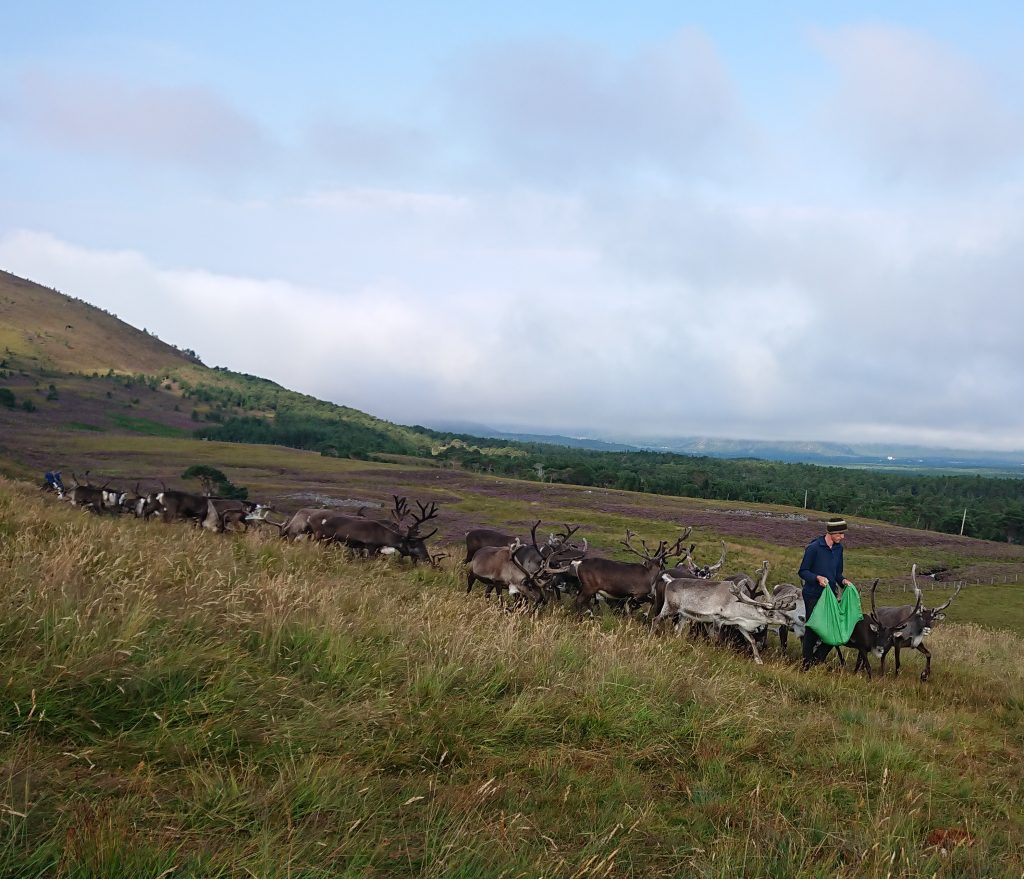
At this point, there is a chance that the numbers don’t add up. You know that there should be 35 reindeer in the herd, but after three counts you’re still counting just 34. The next step is to work out who it is, which is why new herders get it drilled into them to learn the names! Everyone has a slightly different technique here – I walk along the line literally saying each name out loud, “Rubiks, Feta, Scrabble…” then when I get to the end of the line I can look at a list of who should be there and I’ll remember who I didn’t see.
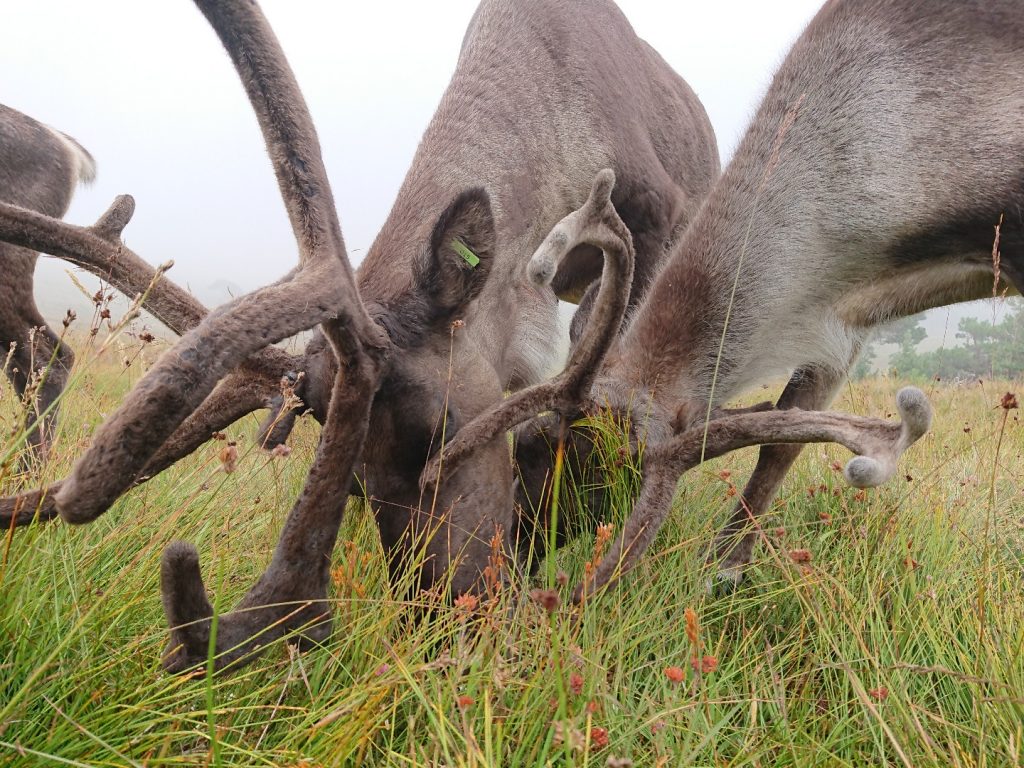
As a herd animal, most reindeer are rarely off on their own, so to have one reindeer missing can be a sign they are unwell, feeling miserable, and haven’t followed the herd. But depending on the reindeer it can just mean they’re off on a jolly! But either way, if a reindeer is AWOL in the enclosure, we’ll head out and look for them, taking a wee bag of tasty food and a headcollar. At certain times of the year I seem to spend half my time trudging round the enclosure. At 1,200 acres and including a mountain, it keeps us fit and we sometimes can’t manage to find a missing reindeer if they don’t want to be found. Usually though we eventually come across them, and we either pop a headcollar on and lead them back, or if they’re a bit wilder we herd them in.
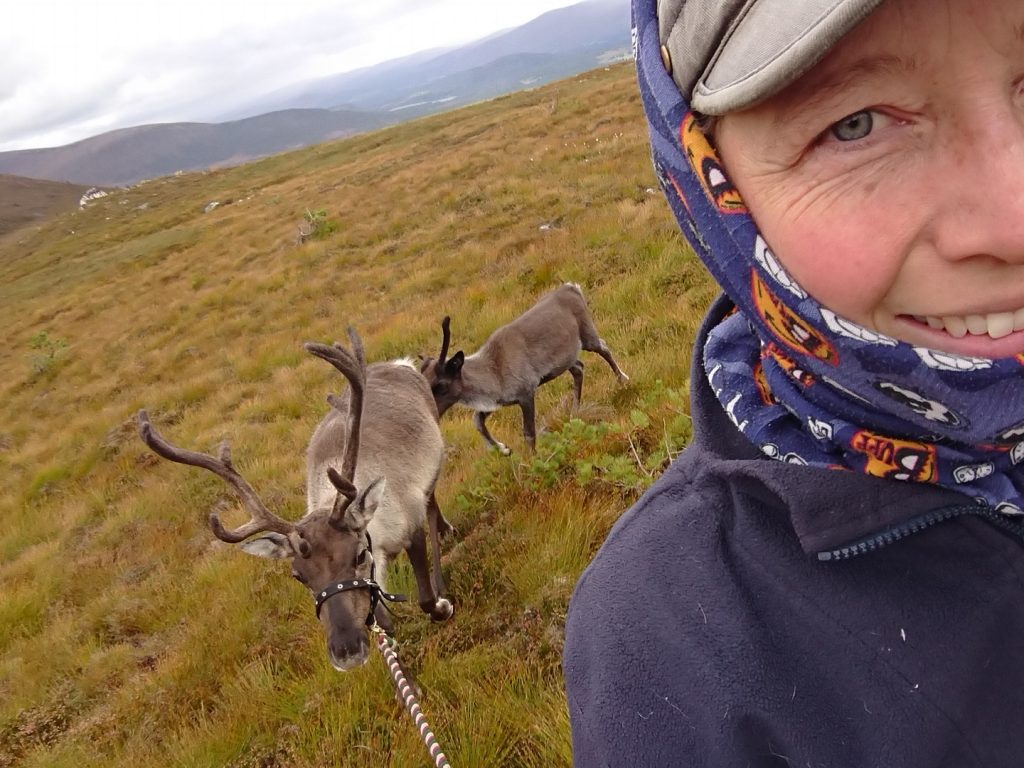
Next step is to check their temperature. Whilst they’re distracted with a bag of food, we use a thermometer, inserted… round the back end… to check if it is high or low. The “normal” temperature for a reindeer is 38.9, with a bit of normal variation – some run a bit high or low. But if its above 39.5, they’re running a fever. Most of the time this doesn’t require a vet to visit – we can inject antibiotics ourselves and in most cases this sorts them out in a day or two. We’ll usually keep them split off with a friend in a smaller part of the enclosure until they’re recovered, to keep an eye on them.
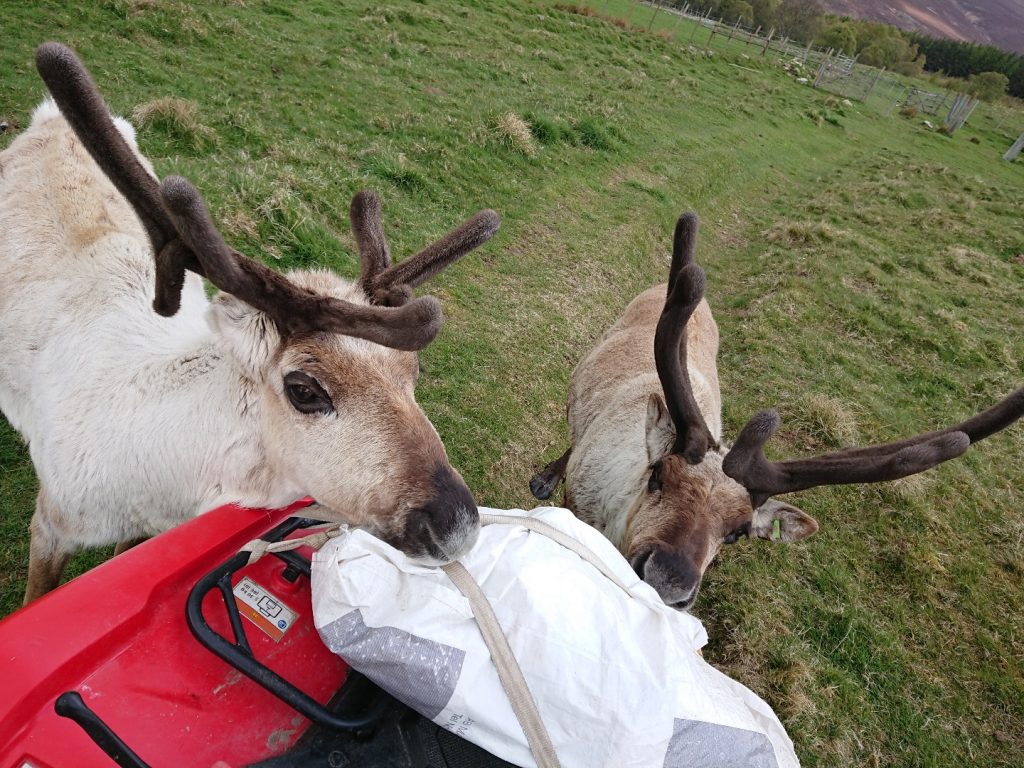
Sometimes poorly reindeer have stuck with the herd, but when we pop the feed out, they stand off looking morose, head low, perhaps even lying down – lying down with chin down on the ground is a red flag. This is particularly noticeable with the greedier characters, who suddenly undergo a personality change! On other occasions reindeer are with the herd, eating on the line, but there is just something about them that suggests all is not well. It’s a bit like knowing there is something wrong with your partner or friend, even through they’re going through all of the motions. There’s definitely a bit of experience and intuition involved here – I can’t always put a finger on it but am always quite pleased with myself when I decide to take a temperature on a hunch and am proved correct!
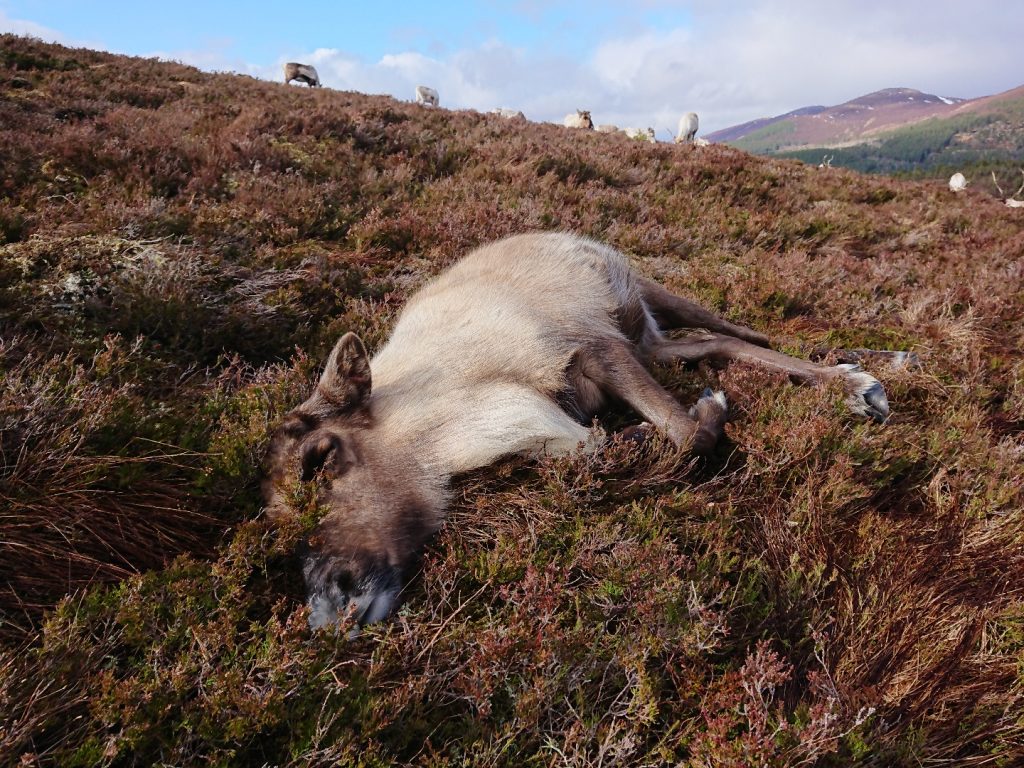
The other thing we keep a close eye on is the colour of pee… (its a delightful job working with animals!). Reindeer can be affected by a tiny parasite called babesia (similar to the parasite that causes malaria), which is again transmitted by ticks. This delightful critter can make reindeer very poorly indeed – one of the main effects is that the red blood cells are broken down, leading to the reindeer literally peeing blood – so looking each time you hear a tinkle is a great way to spot this. The nickname for the illness is “Red Water Fever” – referring to this red urine. Affected reindeer are usually also incredibly miserable and quiet. Again, we can treat this, but if it’s not spotted quickly enough (for example if we can’t find a reindeer, or if they become ill whilst out free-ranging, where we don’t see every reindeer every day) then it is possible for reindeer to die from it.
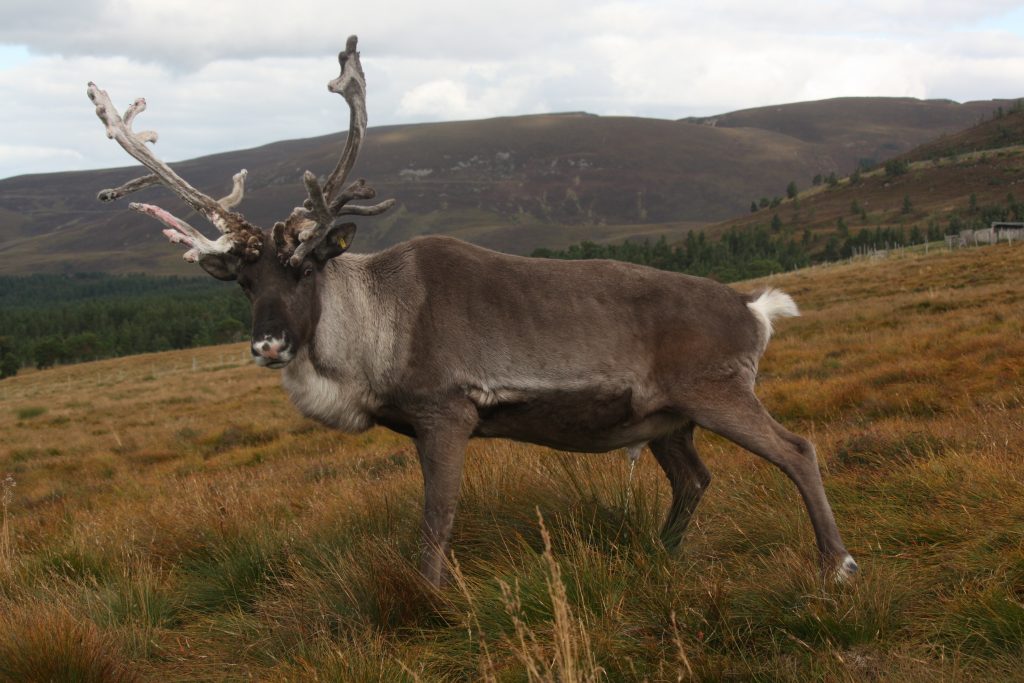
As these illnesses are caused by ticks, and the ticks are affected by the weather, we tend to get runs where several reindeer get ill within a few days, and it can feel like everything is against us as we battle to keep the herd healthy. Prevention-wise, we spend a lot of time waging war on ticks – we use a similar product to that used on dogs and cats which we apply between the front legs of the reindeer which helps stop ticks biting. We regularly feel in the hot-spots (around the ears, under the chin, in the armpits) and pick off any ticks that we find. And we use a vaccine to help protect against red water fever, but its not 100% effective.
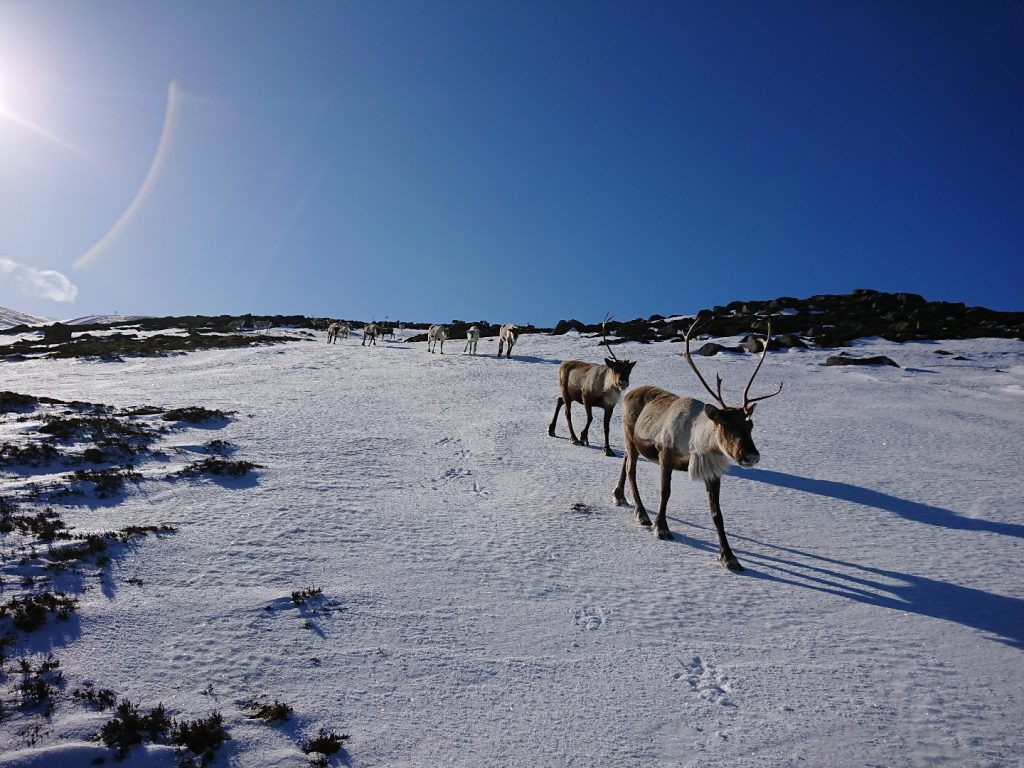
We always look forward to the tick-free winter season, where we can breathe a sigh of relief and relax a little. Our reindeer lead happy lives being able to roam free in their natural habitat, and face none of the health issues that can be caused by a poorer diet or not being able to roam, but the pay-off is that there is more risk from ticks. I’m sure there must be a purpose for ticks existing in the ecosystem, but I’m afraid I struggle to see what it could be! Until we somehow manage to exterminate the lot of them, we’ll stay vigilant, and do our best to keep our reindeer healthy.
Andi
